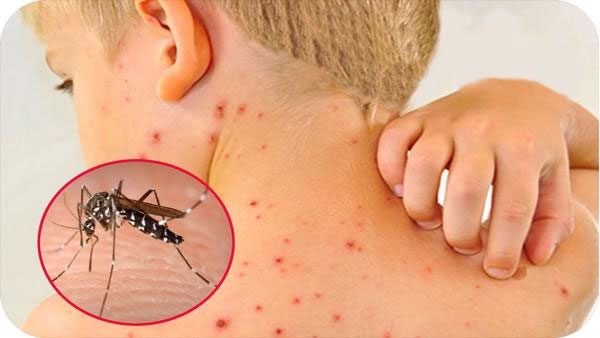Below are guidelines to help distinguish dengue fever from rash fever or viral fever, which you may find useful.

Fever is the body’s reaction to pathogens.
According to the University of Medicine and Pharmacy Hospital in Ho Chi Minh City, facility 2, dengue fever typically progresses through 3 stages:
- Days 1 to 3: Patients experience high, continuous fever that is difficult to reduce, along with headaches and body aches. At this stage, dengue fever symptoms resemble those of other viral fevers and can only be differentiated through testing. Fever is the body’s response to pathogens, and the intensity of the fever varies depending on the strength of the body’s reaction. A temperature exceeding 37.5 degrees Celsius indicates fever; therefore, some dengue patients may only have mild fever and may not pay attention to it.
- Days 3 to 7: Patients may start to experience a reduction in fever; however, complications such as increased vascular permeability can lead to blood concentration and reduced platelet count, potentially causing dengue hemorrhagic fever with varying degrees of rashes. Some patients may begin to experience unusual bleeding due to low platelet counts: nosebleeds, gum bleeding, skin hemorrhages, vomiting blood, or black stools…
- From day 7 onward: Symptoms will begin to recover, and patients may develop rashes on the skin accompanied by itching. The itching may persist for a few days.
For rash fever and other viral fevers:
- Patients may have high fever but in intermittent episodes, accompanied by upper respiratory symptoms such as cough, runny nose, sore throat, body aches, and may or may not have a rash…
- Patients may experience high fever along with muscle aches, headaches, and rashes… Dengue fever closely resembles other forms of viral fever or common rash fever. To differentiate the conditions, you need to monitor symptoms and specific signs: rashes from rash fever will disappear quickly when the skin is stretched. If the red spots persist or fade very slowly, it may indicate dengue fever with rashes.
- The best way to differentiate between types of fever is to visit a healthcare facility for a blood test.
- Additionally, if you notice a child has a fever, take them to the hospital for examination; do not self-medicate as it may worsen the condition.
Dengue fever and deadly misconceptions



















































